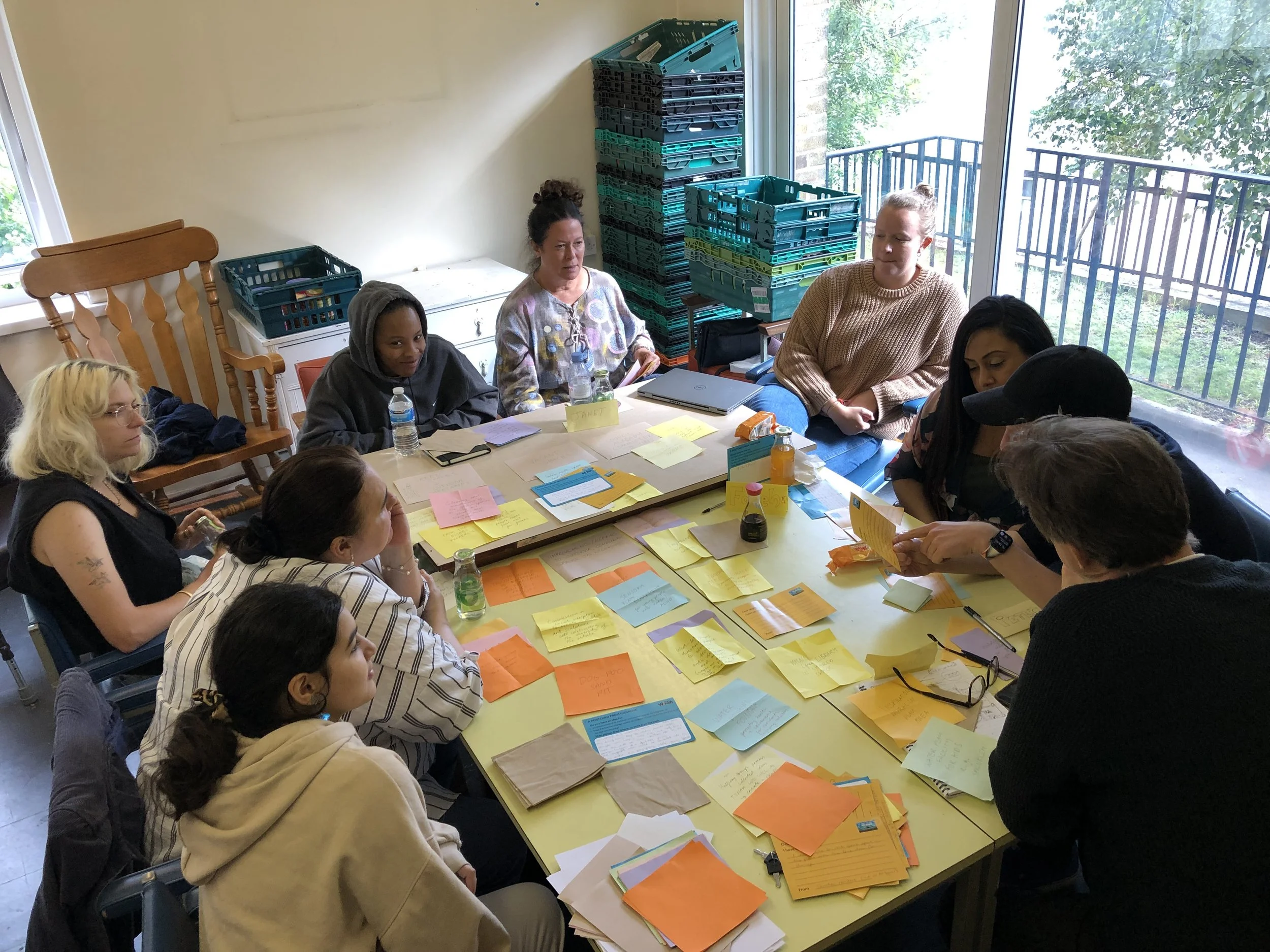What has happened so far?
Coordinating Group meeting 1
AIM: Getting to know each other and introducing process
This session was attended by all the new Coordinating Group members. The Winch selected members of the Coordinating Group through an open application process and ensured that the group represented different ethnicities, ages, gender, location and housing status on the estate.
We played games to get to know each other and shared our motivations for being part of this project. We also shared information about what the role would involve, how the project came about and next steps.
Coordinating Group meeting 2
AIM: Choosing criteria for ideas and agreeing next steps
In the first half of this meeting, the Winch and the council shared more information to put this project in context. This included:
What is ‘participation’ and how can we measure how much power is handed to citizens? (Arnstein’s Ladder of Participation)
Other examples of participatory budgeting from around the world
What has happened so far on Hilgrove?
Reviewing the timeline for the process
We then broke into group to collectively discuss how we would work together and what the criteria for filtering ideas should be. We decided by consensus on the following criteria:
Will it meet residents needs?
Will it improve equity?
Will it bring people together?
Is it environmentally friendly?
Is it feasible?
Agenda here.
BBQ engagement event
AIM: To engage more residents in the process and to gather ideas
The Coordinating Group organised a big community BBQ to celebrate the end of the support with the support of the Winch. Kankan, who lives in Freeling House, prepared the food, the estate food-coop brought along drinks and snacks and we ran water-based activities for the kids. Over 60 residents joined us!
At the BBQ, members of the Coordinating Group chatted to neighbours about the process and invited them to submit an ‘improvement’ idea on a postcard into the ideas box
Q+A with Heads of Service
AIM: For residents to better understand how Maintenance and Green Spaces services currently operate
In this online meeting with Susan O’Hara (Principal Caretaking Manager, Camden Council) and Andrew Hinchley (Head of Green Space, Camden Council) residents had the opportunity to ask questions about how current services are run. With this information, residents would be better prepared to think about how they might spend these budgets differently. The budgets in question were a £16k/year grounds maintenance contract with IDVerde and £42k/year that covers the time spent by caretakers cleaning outdoor spaces.
Topics we covered included:
Which specific tasks are included within these two budgets
Who delivers this service and why (insourced vs. outsourced services)
What are the channels of accountability for this service? Who manages it and how can residents feedback?
Notes here.
Services alternatives workshops
AIM: To develop proposals for the Maintenance and Green Spaces budgets.
Having learnt more about how services are currently run, we hosted an open workshop to explore how these services might be run differently. This was attended by members of the Coordinating Group and the Tenant and Residents Association and facilitated by the Winch.
We developed proposals for outdoor caretaking and grounds maintenance. We reviewed comments from residents about these services which had been gathered through door-knocking and the online ideas form. We identified the main themes that came up and then brainstormed ideas for how these could be addressed.
PROPOSAL 1: Employ a live-in caretaker to maintain outdoor spaces on Hilgrove and improved channels of accountability
PROPOSAL 2: Find an alternative provider to IDVerde for grounds maintenance on Hilgrove. EITHER a small local provider OR someone employed directly by the council.
These proposals were then circulated for approval by the Coordinating Group and the Tenant and Residents Association.
Agenda here. Proposal write-up here.
Coordinating Group meeting 3
AIM: To filter and score all the ideas according to criteria
We started this session by reflecting on the process so far, including challenges and learnings.
We then started manually sorting all the ideas we had received (the online submissions written out on pieces of paper). There were two stages to this sorting:
STAGE 1: Filter the ideas to ensure they fall within the scope of the budget. We created separate piles for ideas that were relevant to the ‘Vacant Spaces’ project and ideas the council have already committed to.
STAGE 2: Break into two groups and score the filtered ideas according the agreed criteria. From this we developed a shortlist of the 12 highest scoring ideas.
Agenda here. Notes/scoring here.
Coordinating Group meeting 4
AIM: To finalise options to take to vote and plan the voting process
Agenda here.
Bonfire night engagement event
AIM: To build relationships between residents and encourage people to vote
Voting week
The vote was open for one week and residents has the option of voting in person or online. The voting booklet included the highest scoring ideas for improvements to outdoor communal spaces and the alternative caretaking proposal. The grounds maintenance proposal was removed from the ballot paper by the council.

